Today was a very special day. For years, I’ve dreamed of seeing the place where the D-Day landings occurred; today, I finally got the chance. We spent a couple of hours at the Mémorial de Caen, the local WWII museum. From there, we took a tour that brought us to Point du Hoc, Omaha Beach, and the American Cemetery.
Context
To give some background, the Germans captured France and most of mainland Europe by 1941, following the Allied defeat at Dunkirk (see my post two days ago). For 3 years, they held onto most of that territory. By 1944, the Allies were ready and able to launch an invasion in France to push the Germans back into their homeland. The invasion began on June 6th, 1944, a date that came to be known as D-Day.
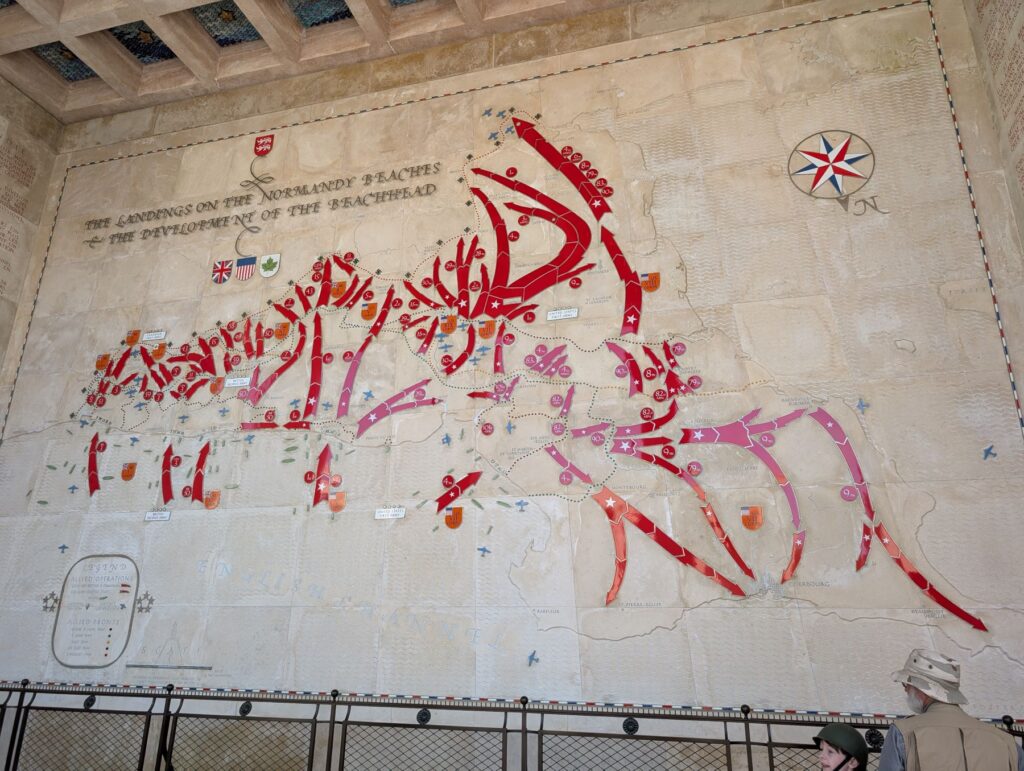
D-Day consisted of amphibious landings on 5 beaches across the province of Normandy, where American, Canadian, and British troops ran across open sand to capture as much territory as possible. The Americans were to storm Utah and Omaha beaches. The deadliest by far proved to be Omaha. You can watch a fairly realistic portrayal of the Omaha Beach landing in the first 20 minutes of the movie Saving Private Ryan. The beach was well-defended because the weather that day caused the naval bombardment to completely miss the German bunkers, meaning they had all of their defensive measures in place.
Point du Hoc
First up on the tour was Point du Hoc, where 225 US Army Rangers scaled 30 meter cliffs to knock out German artillery guns. The Point was situated high in the cliffs between Utah and Omaha beaches, giving the German army an excellent point to shoot at both. Given that, the guns had to be destroyed. Once the rangers reached the top of the cliffs, a great battle ensued. The rangers called for reinforcements but were told that none were available. For 2 days, the rangers fought on their own. At the end of the battle, only 90 rangers were left in fighting condition.
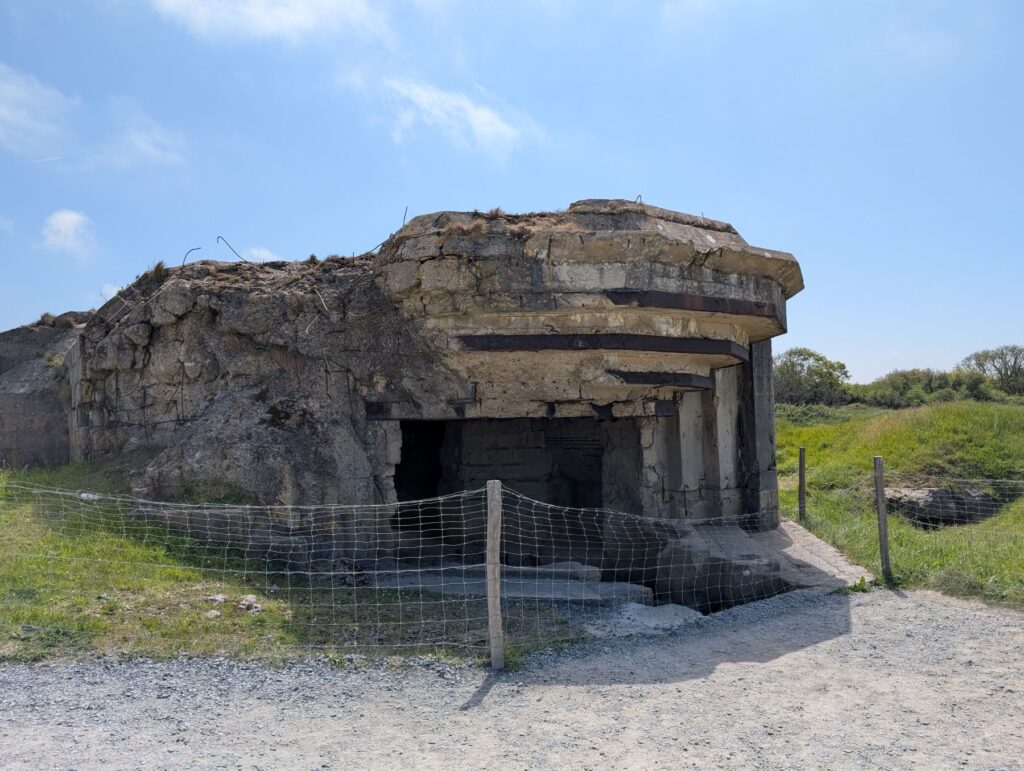
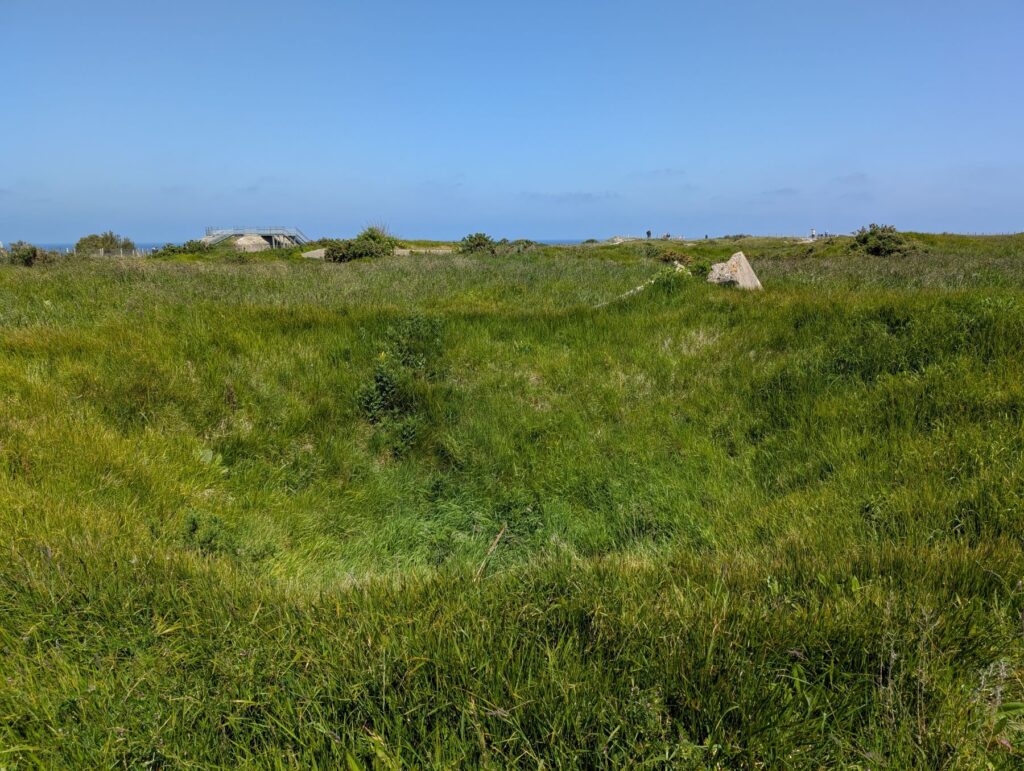
Point du Hoc is currently maintained by the US government for its historical importance. It’s unique in that it’s one of the areas where the artillery shell craters have not been filled in, which leaves the landscape completely pockmarked. Though it doesn’t look like it in the pictures, the craters were massive. Easily could fit 2-4 cars in some of them. Several concrete bunkers also remain to testify to the battle that happened there. To stand there, look out over the English Channel, and imagine the endless sea of ships waiting to invade was pretty emotional. I can only imagine the terror that the poor Germans must’ve felt knowing what was coming.
Omaha Beach
As I said already, Omaha beach was the bloodiest of D-Day. While other beachheads progressed several miles inland that day, the forces on Omaha barely made it past the bluffs overlooking the sand. Nearly 5000 Americans died on the beach.
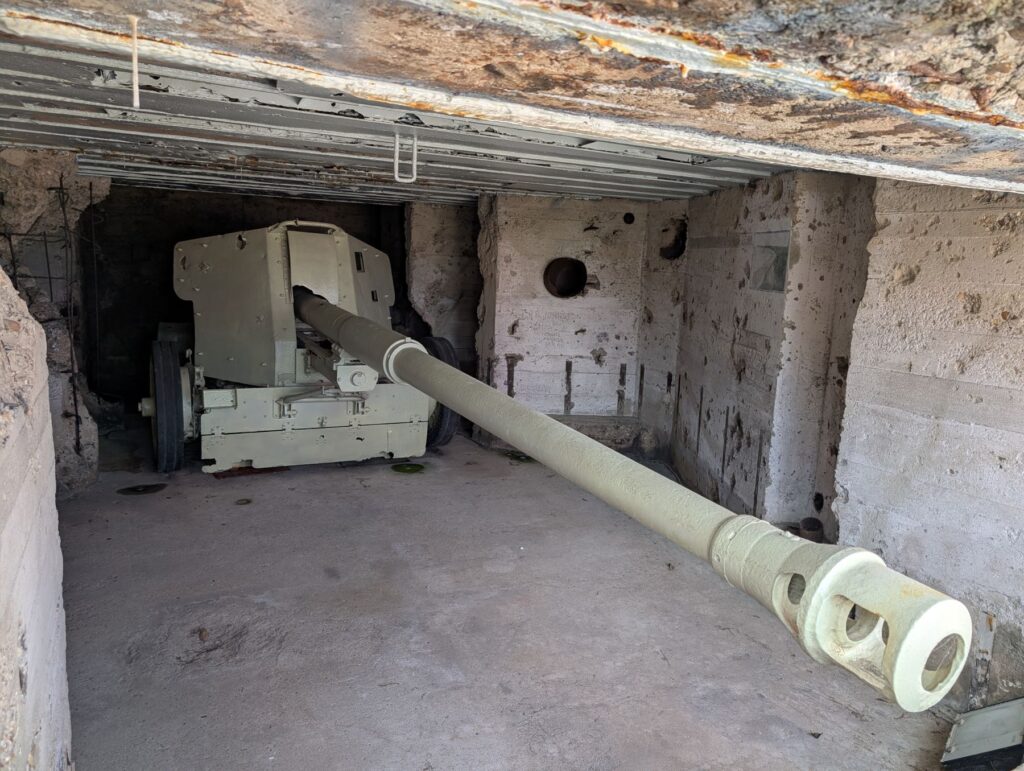
I was shocked to discover that the beach itself was miles long. I had expected a stretch of about a mile, but it went as far as the eye could see. The remains of bunkers and craters in the hills are still scattered throughout.
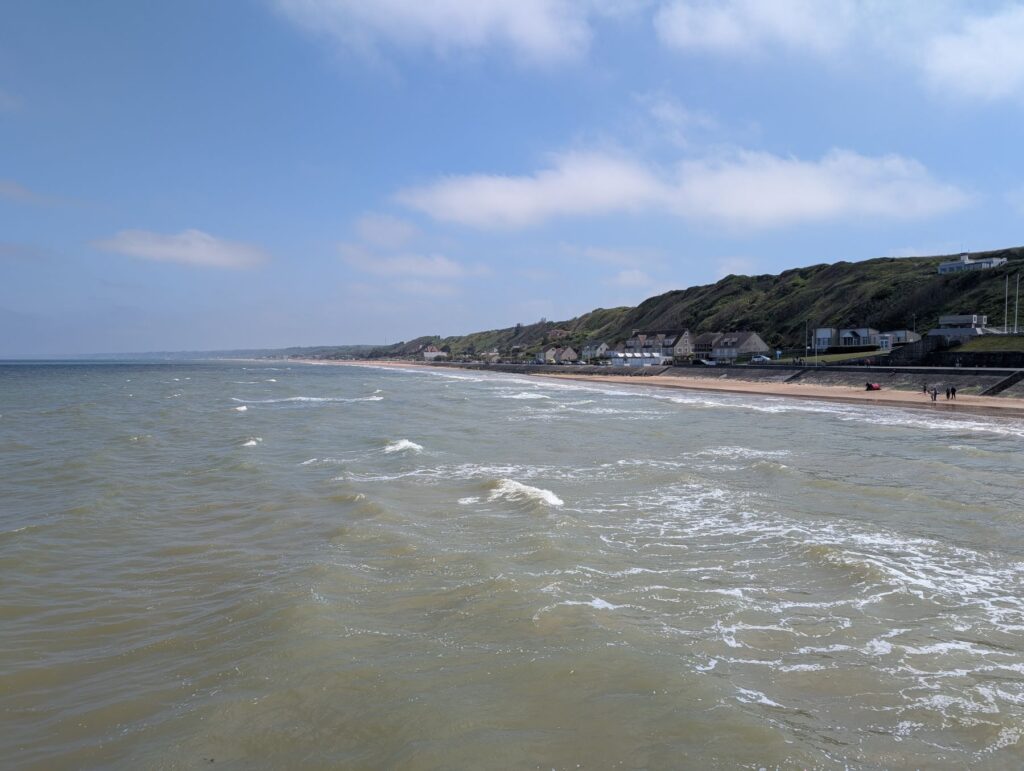
I don’t have much more to say about the beach because it feels so well-known to me. All I’ll say more is that it was important to me to stand there and see where something so important happened 80 years ago.
The American Cemetery
Last up on our tour was a trip to the American Cemetery. We watched the lowering of the flag while Taps played, then walked around a bit. Our guide showed us several important graves:
- Theodore Roosevelt Jr. — the former president’s son, one of the only generals killed in Normandy; died of heart failure of all things; buried next to his brother that was killed in WWI
- 4 women who served in the Army — died in a Jeep crash; they weren’t allowed to carry weapons
- Lesley McNair — one of the 2 highest ranking Americans to be killed in the war
It was a very quiet and respectful cemetery. Very similar to Arlington, if you’ve ever been there. The Northern edge overlooks Omaha Beach.
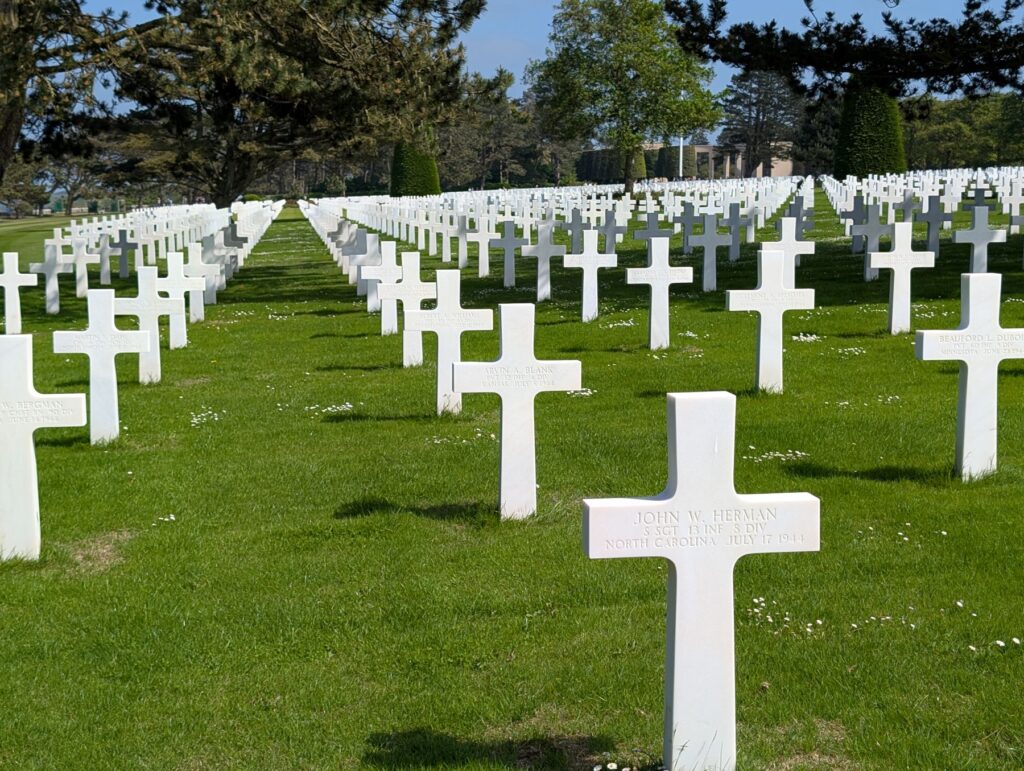
Differing Perspectives
It was very interesting to see how many German tourists were here today. Easily as many as American and English tourists. I would’ve loved to ask why, but it’s extremely taboo to ask modern Germans about WWII, so I didn’t bother. I know that their culture really emphasizes not repeating the mistakes of old, so it wouldn’t surprise me if they were here to also pay homage to the Allied troops that fought here. I’m sure they also have relatives that may have defended here. If one thing has become clear to me on this trip, it’s that there are just people on both sides of every war. Horrible governments, absolutely. But just regular people that love watching their kids grow up, worry about the future, laugh, dance, enjoy watching sunsets, and just want to go about living. Whatever side your ancestors were on, they’re all honored here.
On a similar note, it’s interesting to see more of the French perspective of the war. Despite the fame of the French Resistance and the infamy of the French Collaborators, I learned that the vast majority of Frenchmen just wanted to get on with their lives. They did whatever they could to keep their heads down, maintain whatever normalcy possible, and see what happens. Wouldn’t most of us do the same? I think I would. But the war wouldn’t have gone the way it did without people doing something. It’s something to ponder.
Other Things
Right across the street from our hotel is a marina that leads out to the ocean a few miles away. Lots of local pleasure craft are parked there. Today, a Spanish Galleon parked there! It’s obviously not usually there because the locals were all gawking at it and taking photos. I did too, but it struck me as amusing that people would be taking pictures of a 300 year old ship while a 1000 year old castle is up the road.
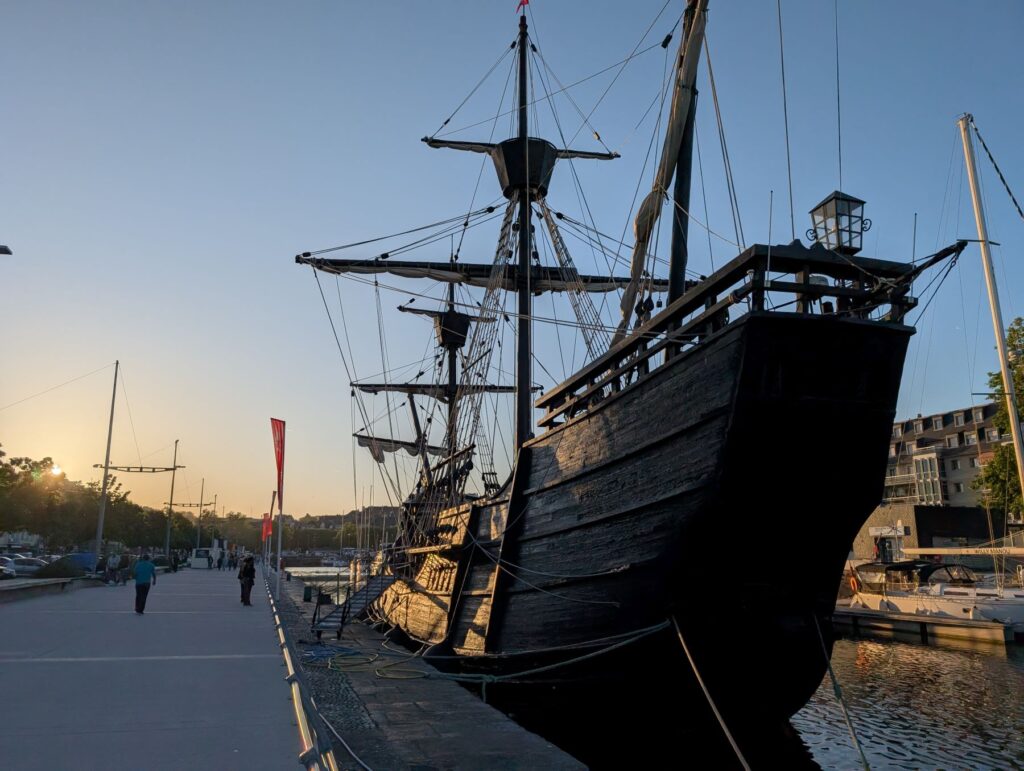
My French is getting better too. I can now say about 10 phrases. Two days ago, I knew two words. Yay!
Tomorrow, we’re just going to finish up at the museum and walk around the city some more. Maybe eat some more of that heavenly baked bread here. I am really loving France. I never expected that. I wonder if I just see people as all the same here, which makes them all feel less threatening, less rude, and more equal. Since everyone is a French stranger, it would make sense that none of them is more trustworthy or threatening than another. I don’t know. I feel very at home in Europe and I’m still trying to figure out why. Being able to walk and ride the bus/train to everything sure helps.
That’s it for now. There’s so much more to say! But the clock keeps ticking. I’m glad I still have nearly a month left here.